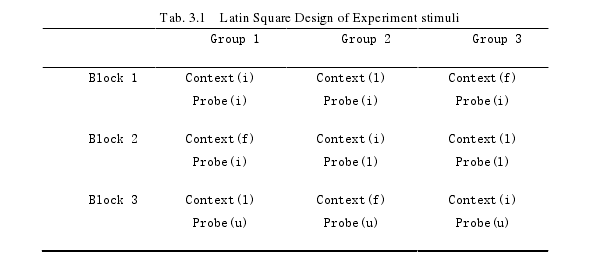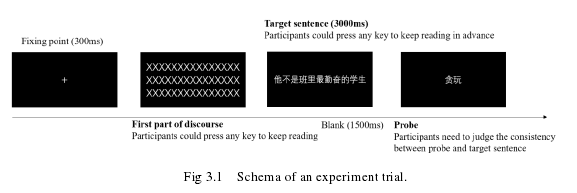1 Introduction
1.1 Research Background
Figurative language is widely used in people’s daily life for different purposes. For different psychological motivations, people use irony to achieve complex social communication purposes, or to criticize others[1]错误!未找到引用源。, or to attract attention for humorous effect[2][3], or to take care of others’ faces and protect the addressee[2][4]. The research focus of linguistics on rhetorical language has changed from literature and rhetoric to cognitive psychology and neuroscience in the last century. Since 1960s, there has been a rapid growth in the research field of irony abroad, and domestic research has followed the pace. As Liu stated that studying the interpretation of irony is not only helpful to reveal the comprehending process of nonliteral utterances, but also helpful to explain the understanding process between irony and other figurative language[6]. Comprehension of the interpretation process of figurative language is the manifestation of cognitive complexities[1].
Statements such as “She is not the most fascinating speaker around” could be interpreted as either ironically (She is boring) or literally (Others are more fascinating)[7]. Giora and her colleagues tried to use Graded Salience Hypothesis and nonliteral default interpretation to illustrate the interpreting mechanism behind. However, the priority of ironic interpretation could not be interpreted by any existing model at that time. Giora therefore proposed Defaultness Hypothesis, as an umbrella theory that encompasses both Graded Salience Hypothesis and the view of default nonliteral interpretations in 2015. To be considered a default, an interpretation must be construed unconditionally—initially and directly—regardless of explicit cueing, including explicit contextual information to the contrary.
..................................
1.2 Research Significance
This research aims to testify the applicability of Defaultness Hypothesis in Chinese language (to examine whether people would interpret a negative construction as ironic by default), and to analyze the influence of context on the interpretation of negative construction.
In this study, all the materials are presented in Chinese, which may cause different results from previous research on Defaultness Hypothesis as previous studies mainly focused on Hebrew and English. The three languages belong to different language families: Chinese belongs to Sino-Tibetan language; Hebrew belongs to the Semitic language family of the Asian-African language family; English belongs to Indo-European language family. Significant difference was observed between different language, so the applicability of Defaultness Hypothesis to Chinese is important.
This study focuses on the interpretation of Chinese negative constructions and the influence of context. Since there are few related studies in domestic irony research field, this study will shed light on negative construction interpretation in Chinese language.
This study aims to explore the influence of context on the interpretation of negative constructions embedded in a certain type of context (literally biasing context or ironically biasing context), and its default interpretation of such kind of constructions. Another purpose of this study is to testify the applicability of Defaultness Hypothesis. Since there are always two sides of participants in a conversation: addressor and addressee. Addressors intend to pass their intended meanings to addressees and addressees manage to cooperate with the addressors and interpret the implications of addressors.
.........................
2 Literature Review
2.1 Irony and Context
Irony and context are the two major concepts in this study, and the two concepts have been discussed for a long time in linguistic studies. This section introduces the development of the two concepts and related theories.
2.1.1 Irony and Irony Processing Models
Cognitive study of irony is drawing more and more attention from cognitive linguistics in that it will illuminate the comprehensive process and cognitive mechanism of nonliteral language[8]. Irony is a special device of using language creatively, and it is a complex cognitive and psychological phenomenon.
Merriam-Webster dictionary defines irony as: a) the use of words to express something other than and especially the opposite the opposite of the literal meaning, and b) a usually humorous or sardonic literary style or form characterized by irony. Etymologically speaking, irony is derived from Greek eironeia “dissimulation, assumed ignorance”, and eiron “dissembler”, perhaps related to eirein “to speak”. Irony was used in ancient Greece as affected ignorance, especially by Socrates, as a method of exposing an antagonist’s ignorance by pretending to modestly seek information or instruction from him. This original meaning of irony has always been the basic principle of irony theories[9].
Through the experiment, Pexman and Zvaigzne found that people are more willing to use irony with people who are in solidary relationships because solidary relationships are close, liking, and mutual supportive[10]. It is noteworthy that with the rapid development speed of network communication, most of the real time communication are conducted via internet. Some people who do not like to use irony in real life are more inclined to use irony online, causing a strong contrast of personality on and off the internet.
Toplak and Katz concluded that the behavior of using ironies is often perceived as insincere, impolite, humorous, mocking, offensive, aggressive, anger-provoking, non-instructional, unclear, and the speaker was regarded as in his or her own pleasure[11]. Zhang considered that literal criticism can cause more anger than ironic criticism, and irony criticism alleviate the anxiety of listeners to some extent and is accepted more easily than literal criticism错误!未找到引用源。. Irony is also broadly used in daily life and it is deeply loved by people on account of broadening connotative and considerable artistic effect[12]. Some researchers argued that irony dilutes the condemnation and it is a face-saving strategy[4,13-14]. While Cao believed that irony enhances condemnation and increasing harm to others[5].
..................................
2.2 The Influence of Context on Irony
In the studies of figurative language, context is critical in interpreting the intended meaning. However, researchers’ opinions remain controversial on the influence of context. This section reviews previous works of the influence of context on irony, including the ironic construction and the interpretation of negative constructions.
2.2.1 Interpretation of Ironic Construction
Except for conventional and familiar irony, default ironic interpretations are not salient in mental lexicon. Graded Salience Hypothesis has received some criticism for taking such a static view of the concept of salience while assigning a very limited role to context. On the other hand, the influence of context on the interpretation of irony remains to be controversial. “Context effects” stressed that contextual information affects final interpretations, and that when it is strong enough, it results in appropriate readings quite early on. Giora provided a summary that there was a disagreement as to whether
(1) initial processing stages are influenced by context so that only the congruent meanings, or context-compatible meanings are accessed; or whether
(2) context has no influence on the initial lexical processes and therefore could not filter the context-incompatible at the early stages[33].
Quite a lot of researchers believed that context plays a critical role in irony interpretation. Studies have been made from different aspects of context: processing strategies of the context[44], occupation of speakers in context[26], and incongruency between context and target[47].

Tab. 3.1 Latin Square Design of Experiment stimuli
................................
3 Methodology ............................................... 203.1 Participants ............................................ 20
3.2 Materials ................................................... 20
3.3 Procedure ........................................... 24
4 Results .......................................... 27
4.1 Reaction Time and Accuracy ................................. 27
4.2 Analysis of the Interview ................................. 29
5 Discussion ...................................................... 32
5.1 The Influence of Context on the Ironic Interpretation of Negative Construction ......................... 32
5.1.1 Reaction Time ...................................... 32
5.1.2 Accuracy ............................................... 34
5 Discussion
5.1 The Influence of Context on the Ironic Interpretation of Negative Construction
According to the data analysis in previous chapter, unrelated probe was processed faster than incongruent probe, and than congruent probe in ironically/literally biasing contexts. In addition, unrelated probe was reacted more correctly than incongruent probe, and more correctly than congruent probe. Results also showed that for Reaction Time, the difference between the two context types was not statistically significant, which means there was no speed superiority in processing in the two different biasing contexts. On the other hand, context effect played a major role in accuracy.
5.1.1 Reaction Time
Participants in this study had to check the consistency between the interpretation of target negative construction and probe. Judging the consistency between target negative construction and probe is another form of lexical decision task: the first thing for participants is to comprehend the target negative constructions in contexts, and then they were asked to identify the correlation between the randomly presented probe and the interpretation of the target sentence. Because the meaning of unrelated probe was very different from the context and was totally irrelevant to the context and target sentence, it was the easiest for participants to identify it had no connection with the interpretation of target sentence at all. Congruent probe corresponds to the context-compatible interpretation, while the meaning of incongruent probe is opposite to the meaning of congruent probe. In literally biasing context, congruent probe illustrates the literal meaning of the negative construction “X is not the most…”. On the contrary, congruent probe illustrates the ironic meaning of the negative construction in ironically biasing context. Compared with congruent probe, unrelated probe and incongruent probe were much easier to be perceived and it cost much shorter time to judge the consistency, thus the Reaction Time of congruent probe is the longest.

Fig 3.1 Schema of an experiment trial.
6 Conclusion
6.1 Major Findings
By comparing the Reaction Time and Accuracy of interpretating negative construction: “X 不是最…的(X is not the most…)” in ironically/literally biasing contexts, the present study found that Chinese native speakers interpret the negative construction without context more literally. Meanwhile, based on the results of post experiment interview, participants could also feel the irony behind. Contexts play a significant role in interpretating negative construction: people interpret it more ironically in ironically biasing contexts and interpret it more literally in literally biasing contexts. Though the interpretation speed of negative construction did not show significant difference in the two biasing contexts.
Most Chinese native speakers tend to interpret the negative constructions without context more literally, while some participant believed that they could perceive the irony behind. Most participants choose to hold a modest and neutral attitude towards the subjects of the negative constructions because they think there’s always someone who is better, and there’s no need to criticize that person.
It should be noted that the interpretation of negative structure is scalar because participant rated the degree of irony on a 5-point scale (Giora’s experiments used 7-point scale). The average results did not reach the end of scale and they were biasing towards one end of the scale. Negative constructions indeed attenuate the positivity of adjective, but not as strongly as Defaultness Hypothesis suggested.
Giora’s Defaultness Hypothesis stressed that the default interpretation of negative construction is ironic regardless of context, and this hypothesis is mainly studied in Hebrew. The present study centered on Chinese and it is concluded that Defaultness Hypothesis could not explain the results of this study well and it is inadequate to explain the interpretation process of Chinese native speakers. As Chinese and Hebrew share different cultural values, the patterns people interpret language are influenced by the culture behind.
reference(omitted)
